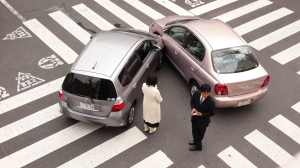
A city is a living organism, defined by its movement. The flow of commerce, commuters, and public transit creates a complex ecosystem that, unfortunately, breeds conflict. Urban traffic accidents are rarely simple instances of “driver error.” They are often the result of systemic friction between outdated infrastructure, aggressive commercial schedules, and population density.
To understand the legal landscape of car crashes in Chicago or any major metropolis, one must look beyond the steering wheel and analyze the societal and economic forces at play.
The “Last Mile” Economy and Commercial Liability
The explosion of e-commerce has fundamentally changed city streets. The “last mile” of delivery—getting a package from a distribution hub to a doorstep—is the most expensive and chaotic part of the supply chain. This has flooded residential neighborhoods with delivery vans, gig-economy drivers, and rushed couriers. From a business perspective, these drivers are under immense pressure to meet delivery quotas. This systemic pressure often incentivizes speeding, illegal parking (creating blind spots), and aggressive driving. When an accident involves a commercial vehicle, the legal case expands into the realm of corporate liability. Was the driver properly trained? Did the company enforce unrealistic schedules that mandated reckless driving? These are questions of corporate governance and business ethics that transform a simple fender-bender into complex litigation.
Urban Design and Municipal Responsibility
Politics and policy play a direct role in road safety. Decisions made in city hall regarding bike lanes, bus-only zones, and traffic light timing have tangible consequences. “Vision Zero” initiatives aim to eliminate traffic fatalities through better design, but the transition period often creates confusion. Confusing signage, faded lane markers, or construction zones that linger for months can create hazardous traps for drivers. In these instances, the liability may be shared between a negligent driver and the municipal entities responsible for maintaining safe thoroughfares.
The Societal Impact of Rideshare
The rise of the “sharing economy” (Uber, Lyft) has added another layer of complexity. These platforms have reduced drunk driving incidents in some demographics but increased congestion in others. Legally, they have created a tiered system of insurance coverage that depends entirely on the status of a smartphone app. Navigating a claim against a rideshare giant requires understanding this specific business model. Defense attorneys for these tech giants are skilled at shifting liability onto the individual “independent contractor” driver, who often lacks the assets to cover severe damages.
Conclusion
Urban accidents are a symptom of a busy, complex society. They sit at the intersection of infrastructure policy, corporate logistics, and individual behavior. Untangling who is responsible requires a wide-angle lens that views the accident not just as a crash, but as a failure of the urban ecosystem.






